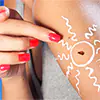
Until now, scientists have not come to a consensus why moles (nevi) appear on the skin, but it is known that heredity is one of the factors that can affect their number in a person. And if your relatives have not had problems with moles, there seems to be no reason to worry. In principle, these skin formations do not affect our lives in any way, and we do not even pay special attention to them. However, it happens that moles become inflamed, increase in size, itch, and many new formations appear on the body. It is known that the most harmless mole can turn into melanoma, and this is a dangerous skin cancer. What do you need to know about moles in order to feel calm and not worry about your health? Is it possible to remove moles for cosmetic or preventive purposes, and how to avoid the risk of skin cancer?
What is melanoma, and does it always appear at the site of a mole?
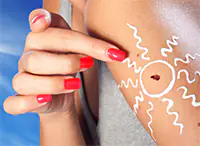 |
| The deterioration of the environmental situation in the last decade has provoked a sharp increase in the number of skin diseases |
Science knows a little more than a hundred types of cancer, but among them melanoma (skin cancer) is one of the most dangerous and aggressive malignant tumors. The insidiousness of this type of skin cancer is unparalleled. Even sunburn received in childhood can provoke the degeneration of a mole into melanoma in adulthood. Once occurring many years ago, the disease can lurk and develop unnoticed in the upper layers of the skin for a long period, up to 50 years. But then individual cells of the hidden tumor begin to grow deep into the body, and a mole or pigment spot becomes the focus of the tumor.
As cancer cells grow, they increase the size of the mole. But this is not the biggest danger. It is known that in the area of moles, malignant cells are not tightly connected to each other; they can break away from the main tumor at any time. Once in the circulatory system, melanoma cells provoke the development of numerous metastases - in the lymph nodes, lungs, eyes, brain, heart. Cancer statistics around the world have shown that every 5-10 years, cases of moles degenerating into melanomas increase exponentially. Today, the share of melanoma among all cancers is 3-4% of tumors.
Is it possible to remove a mole?
If moles do not spoil your appearance or cause you trouble, it is better not to touch them. However, there are times when a mole gets in the way, is constantly injured, rubs against clothes, or is too open and vulnerable. Under no circumstances should you use traditional methods to get rid of moles on your own.
There are several methods for removing moles, and only a specialist, after a thorough examination of the appearance of the neoplasm, can recommend one method or another:
- electrocoagulation - allows you to quickly remove a mole, and this method helps to stop the proliferation of malignant cells, if any;
- laser removal of moles;
- surgical removal under local anesthesia, after which several cosmetic stitches will have to be applied;
- effective removal using cryotherapy.
Under no circumstances should you remove moles yourself; this can lead to very serious consequences and even death.
In the last decade, cases of moles degenerating into malignant tumors - melanoma - have become more frequent. This disease is most often diagnosed in young women under 25 years of age; after breast cancer, it ranks second among diseases in women aged 30-35 years.
How to diagnose a mole before removal
Moles can and often even need to be removed in cases where they are a significant cosmetic defect or are systematically injured due to their location. In such cases, you should contact a cosmetologist or dermatologist, and only a specialist will decide whether it can be removed.
Moles are removed only in a hospital, after all the necessary examinations and tests.
- Initial examination by a dermatologist - the doctor examines the patient, finds out the circumstances of its origin and growth.
- Digital dermatoscopy is a modern method of visual diagnosis of a mole under high magnification using a dermatoscope.
- Skin ultrasound is an innovative technology with which, without incisions, you can determine the depth of the mole in the skin and choose the method of mole removal that is suitable for you - laser or surgical removal.
- Consultation with an oncologist will be necessary only if, at the previous stages of the examination, the specialist suspects the malignant nature of the mole being examined.
- Consultation with a plastic surgeon is necessary when surgical removal of a mole along with plastic surgery of the resulting defect is recommended.
Even an experienced dermatologist sometimes cannot immediately determine the initial stage of degeneration of a mole into a malignant tumor. Depending on the capabilities of the medical institution you contacted, the doctor may offer you an examination of the appearance of your mole using the following methods:
- biopsy (excision) followed by histological examination;
- the computer epiluminescent dermatoscopy method allows, without injuring the tissue, to examine the changes occurring in the deep layers of the mole and assess the degree of risk in connection with its removal.
Signs of degeneration of moles (nevi)
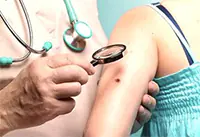 |
| It is possible to remove a mole, but only in a hospital, and you must first undergo an examination by an oncodermatologist |
Melanoma in our country is treated quite successfully, the percentage of fully recovered people is very high. True, for effective treatment, the stage at which treatment was started plays a huge role.
The pre-melanoma period is quite long, you just need to be careful about yourself so as not to miss the first symptoms of a change in the mole. If you notice changes in the shape or color of a mole within a month, be sure to consult with an oncodermatologist. In this case, we are talking about the need to “intercept” the disease at a stage when it can still be overcome.
Dangerous symptoms of changes in moles:
- reduction, change in color or sharp increase in pigmentation of the mole; uneven coloring;
- along the periphery of the mole a ring of coal-black nodules of unequal sizes is formed, which form a “black rosary”;
- “varnish” surface of the mole, lack of skin pattern on the mole, peeling;
- the appearance of an inflammatory halo around a red mole;
- change in the contours of the mole along the perimeter, formation of a “jagged” edge, blurring of the contour of the nevus;
- the mole increases in size, its boundaries blur;
- itching, tingling, burning and any other unusual sensations in the mole area;
- the appearance of cracks, tension, compactions, bleeding in the mole area.
Moles larger than 5-6 mm in size, as well as formations that sharply separate from the surface of the skin or are highly pigmented, require special, constant attention. People with such moles need to be examined regularly, at least twice a year.
Possible causes of melanoma
Experts are inclined to believe that the degeneration of moles into melanoma has moved from the category of rare diseases to common ones due to the deterioration of the environmental situation, the adverse effects of UV radiation from the sun, and the thinning of the ozone layer of the atmosphere.
To provoke the degeneration of a mole, an irritant, a push, is needed. The greatest danger for humans is too much exposure to the bright sun. Those most at risk for skin mutations from sun exposure are people with fair hair and red hair, pale skin and blue, gray or green eyes.
In second place among the reasons that can provoke the development of a malignant tumor at the site of a mole are temperature, chemical or mechanical injuries to nevi, attempts to remove the mole on their own and inadequate cosmetic interventions. Please note that if you accidentally damage or scratch a mole, there is no need to panic, nothing terrible actually happened. Only regular damage to a mole can lead to the risk of melanoma.
No matter how trite it sounds, you need to take care of yourself from a young age. A love of tanning in youth can result in skin cancer in adulthood. After swimming in a pond, be sure to dry yourself with a towel, because drops of water or sea salt crystals on the skin can act like lenses on a sunny day, several times increasing the harmful effects of direct sunlight. Never sunbathe after 10 o'clock and before 15 o'clock, this is the most dangerous period for health, the midday sun kills the immune system, it must be avoided. Neither an awning nor a beach suit can protect you from harmful ultraviolet rays.
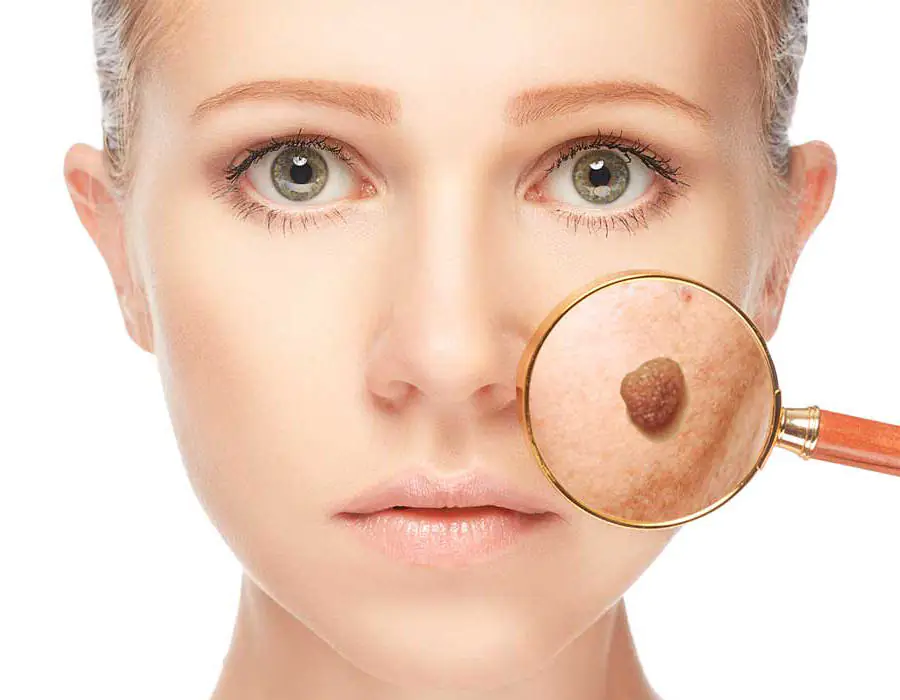
- 2016-08-18 00:00:00
Why remove moles?
What you need to know about mole removal
7 clinics in Moscow since 1994 ☎ (495) 411-99-96, what you need to know about mole removal before choosing a clinic and other questions
If we pose the question more broadly, it may sound like this: why remove moles, warts, papillomas and other neoplasms? How much it's useful and safe?
When answering the questions posed, it is necessary to highlight two main aspects: medical and aesthetic.
Medical aspect of mole removal
Let's start with a discussion of medical indications for removing tumors on the skin. There are two main factors influencing decision-making from a medical point of view: to remove or not to remove?
Firstly, this discomfort caused by the tumor. Since we are talking about neoplasms on the surface of the skin, friction with clothes, shoes, etc. is possible. For example, plantar warts can cause pain when walking. Papillomas on the neck can rub against the collar of a shirt.

papilloma on the chest
It should be borne in mind that neoplasms tend to increase and grow. On the other hand, there is a possibility of damage to the tumor. In case of damage, there may be an infection or even a risk of transformation of a benign formation into a malignant one.
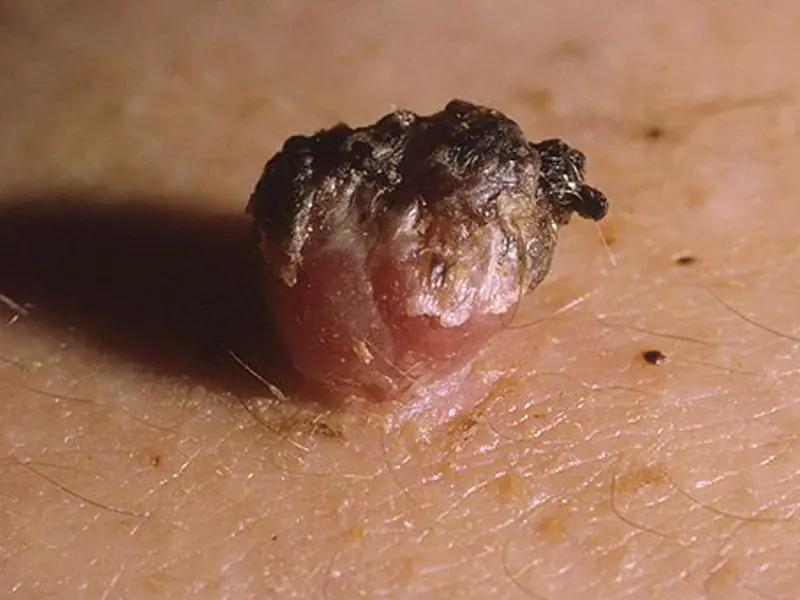
papilloma
The fact is that risk of transformation of a benign formation into a malignant one exists without damage to the tumor. Actually, this fact is another medical factor influencing the decision to remove a mole.
How dangerous are moles from an oncological point of view?
answers Titov Alexey Ivanovich, cosmetologist-surgeon with extensive experience, Ph.D.
20 years works in Rednor centers
Melanoma may pose a risk of developing skin cancer or melanoblastoma is a malignant tumor. It is characterized by all the signs of cancer: unlimited tumor growth, destruction of neighboring structures or organs, spread of cells through the blood or lymphatic system and the formation of new growth foci. If a mole suddenly changes its color, shape, or increases in size, then this is a cause for concern.
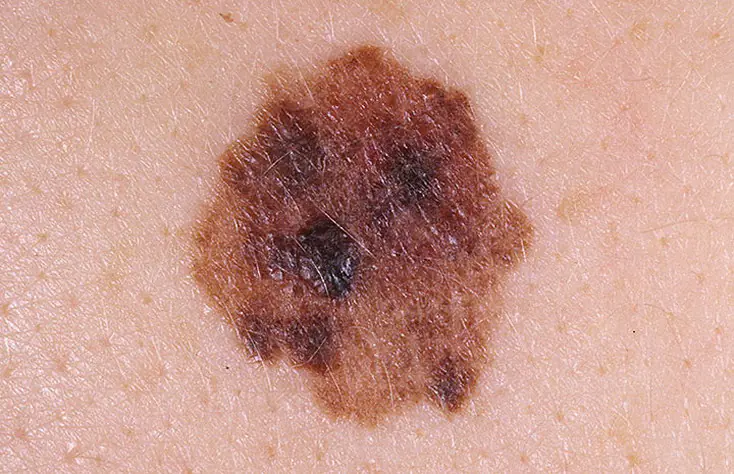
melanoma
The main difference between a malignant tumor on the skin and cancer of internal organs is that, as a rule, a biopsy is not performed to diagnose skin tumors. A biopsy is a method of extracting a portion of cells for histological examination. Since this procedure itself can provoke the spread of diseased cells, for example, through the blood, then after confirmation of malignancy, treatment is mandatory, including surgical excision of tissue. Since nowadays the removal of skin tumors has become much easier, especially with the help of a laser, a different procedure is recommended. If cancer is suspected, the tumor is removed, and some of the cells from the removed tumor are sent for examination.
Thus, high-quality and timely removal of a mole can prevent the development of cancer. Before removal of the tumor, a consultation is held, at which the doctor decides on the possibility of removal; if necessary, the patient is referred to an oncologist. If a malignant tumor is suspected, the material is sent for histological examination.
Most moles do not pose a threat to human life and health. Since histological examination is not included in the cost of removal and often exceeds the cost of removing the tumor, the doctor recommends that it be carried out only if there is reasonable suspicion. However, the patient has the right to conduct such a study in any case. The only limitation can be the size of the mole. If the mole is very small, for example, no more than 1 mm in diameter, then collecting material for examination may be difficult.
Aesthetic aspect of mole removal
Even if we do not take into account such an aspect as the professional activities of actors, politicians, TV presenters and other public people, the fact that “one meets people by their clothes” is undeniable.
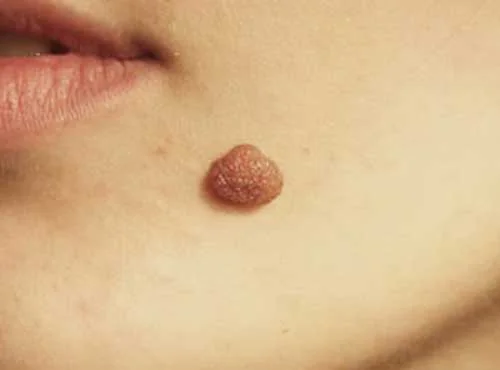
mole before removal
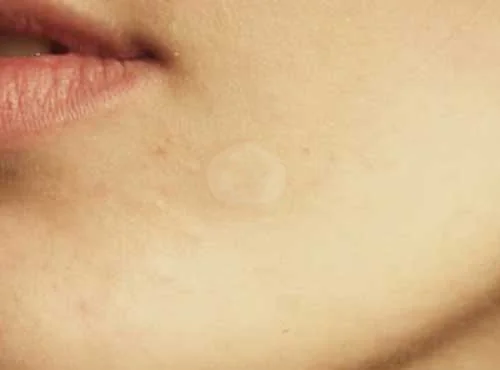
after mole removal
About how skin defects can affect the perception of a person by the people around him was very subtly noted by Mikhail Sholokhov in the novel “Quiet Don”:
Grigory glanced sideways at Natalya. And then for the first time I noticed that her upper lip was plump and hung over her lower visor. I also noticed that on my right cheek, below my cheekbone, there was a brown mole, and on the mole there were two golden hairs, and for some reason this made me feel dreary. I remembered Aksinya’s chiseled neck with curly fluffy curls of hair, and it felt as if they had poured prickly hay dust down the collar of his shirt onto his sweaty back. He shivered and looked with suppressed melancholy at the slurping, slurping, devouring people.
Mole removal with CO2 laser
Fortunately, modern medical technologies can practically work miracles.
Real photo of mole removal from a patient review of the Rednor Center
To enlarge, hover over the photo
See all reviews

before deletion
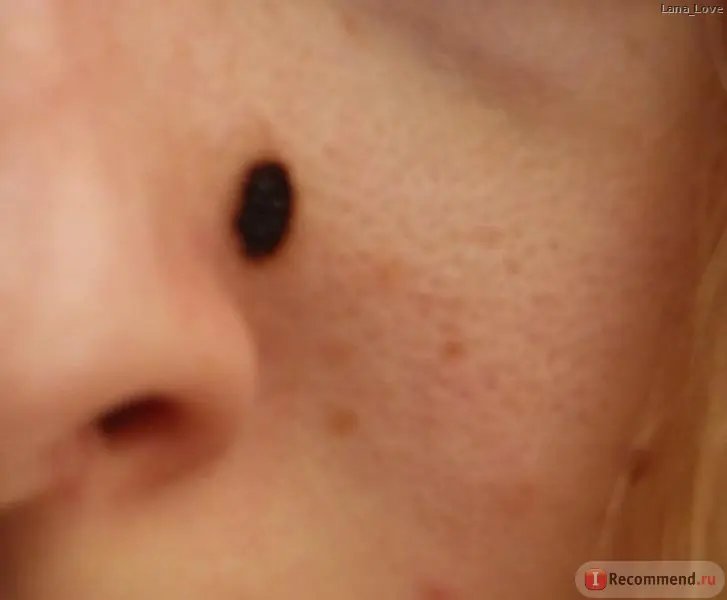
after removal

one year after removal
What are the benefits of laser mole removal?
answers Markova Irina Vyacheslavovna, cosmetologist-surgeon
11 years operates in Rednor centres.
When removing moles and other tumors with a CO2 laser, there is no contact with the skin. Removal is carried out with a laser beam by gradual layer-by-layer evaporation of the affected tissue. Using a laser, removal is carried out with pinpoint precision, as close as possible to the edge of a mole or other neoplasm. It is possible to form a wound of a regular round shape with smooth edges.
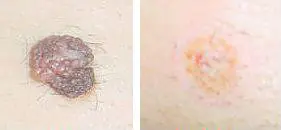
mole before and after removal

wound healing after mole removal
The process of coagulation of tissues and blood vessels is of great importance for the result of removal. The high temperature of the laser beam essentially seals the blood vessels and forms a thin layer over the wound, which protects the wound from infection and subsequently turns into a crust. As a result, the removal process is bloodless, healing is faster, there is no scar at the site of the removed mole, and there is a flat, smooth surface.
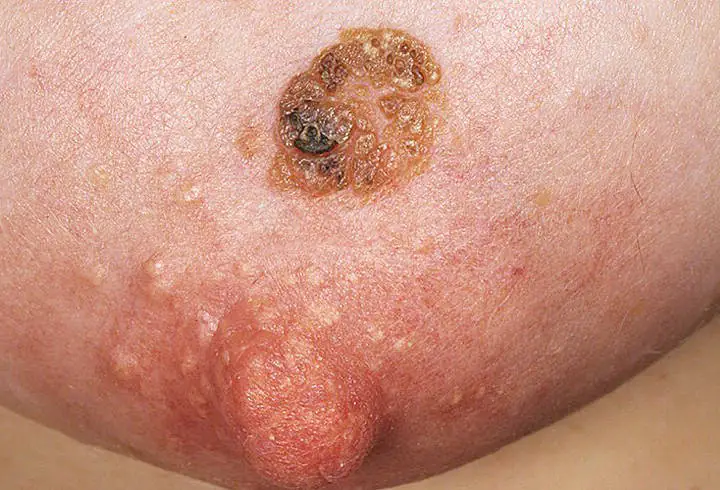
keratoma on the chest before removal

after removal of a keratoma on the chest

There are no people in the world without moles. Nature gives them to us from birth. They appear on the body according to a strict genetic code integrated into the skin cells. A mole that appears suddenly in adulthood is potentially dangerous, because it was the result of an unplanned intervention in the genetic structure of the cell. Her behavior can be unpredictable. And aggressive.
What are moles? (briefly)
Detailed information about the types of moles can be found in a separate article “Moles, types of moles, why they are dangerous and in what cases they are removed.” Here we will outline this information briefly. So, there are two types of moles:
Vascular moles arise from blood vessels. Pigmented - from epidermal cells with an excess of coloring pigment, melanin. Both types of moles are, as a rule, benign skin growths that do not require medical intervention.
Why are moles removed?
Moles are benign neoplasms. Then why is it necessary to remove them? Especially when you consider how many myths circulate online and in everyday life about the terrible consequences of surgical intervention. In fact, sometimes it's scary not to delete. And it is dangerous not to delete it.
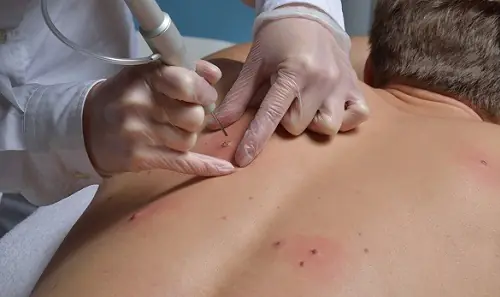
In addition, some moles, especially those that appear in adulthood, are simply potentially dangerous, since there is a very high probability that the neoplasm will develop into skin cancer. More information about melanoma is written in the article “Skin cancer: melanoma.”.
Which moles are dangerous?
What dangerous moles look like








In addition, some moles are removed solely for aesthetic reasons and the desire for comfort.
If the neoplasm behaves suspiciously...
Suspicious behavior of a mole is a warning sign. Stay alert. And remember that only a doctor can solve the problem. Removal must be done by a doctor; not in a salon, not in a beauty salon, but in a professional clinic, otherwise you risk causing irreparable harm to your own health.
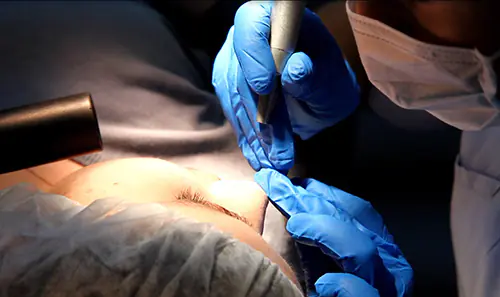
If removal is necessary
Modern methods for diagnosing suspicious neoplasms (see RTM diagnostics) allow you to quickly and with amazing accuracy determine the degree of danger of a particular skin neoplasm. If the doctor has determined the need to remove a mole, then it is better to pay attention to bloodless methods of intervention, such as laser coagulation.
According to statistics, a laser is the most delicate tool for destroying dangerous skin tumors. But unfortunately, it may be ineffective in cases where a large amount of intervention is required (for example, if the tumor has grown and grown deeper).



